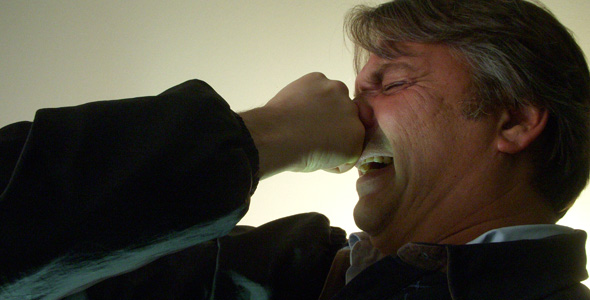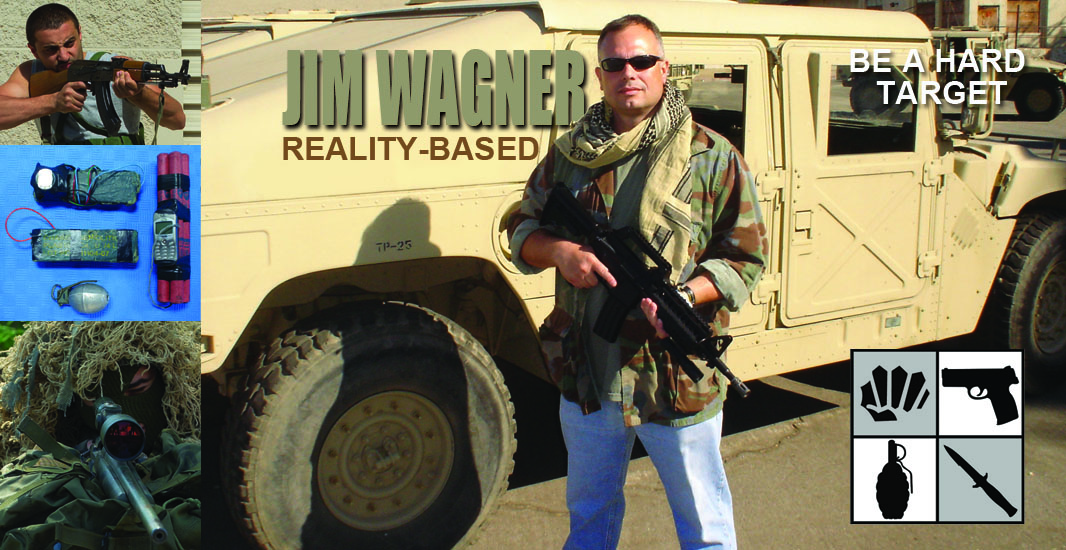In most police academies and military combat units worldwide professional students are taught to use closed fist strikes when resorting to hand-to-hand conflict. When I was a guest Combatives instructor of the Israel Defense Force (IDF) at the Baghad 8 military based near Natanya in 2003 Major Avi Nardia told me, “When we want to hurt someone we use a closed fist, and when we don’t want to hurt someone we used open hand strikes.” This practical no-nonsense advice is also ingrained into today’s United States Army’s Combatives system and the Marine Corps Martial Arts Program (MCMAP), both of which I have studied extensively over the years. The same mindset when it comes to empty hand striking is also same for several other foreign military’s I’ve trained with.

Unfortunately, a trend that began in the early 2000s with many civilian martial arts systems, and still permeates many self-defense students thinking today, is the use of open hand strikes in reasonable force or deadly force situations even when there is a propensity of minor or serious injury to self. In other words, instructors are teaching their students to hit with open hand techniques in real fights.
As of late I’ve been getting a lot of American and European Krav Maga students coming up to me in my Reality-Based Personal Protection courses telling me that they were instructed to use open hand strikes by their instructors. I find this current teaching doctrine very odd because having trained personally with the IDF, and being a former dedicated student myself of KAPAP, Krav Maga, Hisardut, and LOTAR, the preferred striking method for all of these Israeli military systems in combat have historically relied upon striking with a closed fist. However, it’s not just several fringe Israeli-based groups watering down the original military systems that are advising open hand strikes in real conflict, but I’ve even had some Jeet Kune Do, Bruce Lee’s original martial arts system, instructors try to convince me that using an open hand strike is better in a real fight than a closed fist, as if I didn’t know the history of this system. I was one of the original Jeet Kune Do students of Dan Inosanto, Bruce Lee’s protege, since 1977 and we JKD disciples primarily used our fists in and out of class when it came to empty hand conflict. My other JKD instructors held to this truth as well: Richard Bustillo, Ted Lucay Lucay, and Larry Hartsel.
So, why this big shift that began over a decade ago in how one should strike an opponent in a fight, whether with a closed fist or open hand? I believe that what is happening today in many systems is that they are being diluted by civilian martial artists who have never been in actual fights, and as such they are interjecting a lot of their own theories on conflict that have no historical or tactical basis. Since using a closed fist or open hand technique in a real fight is foundational in protecting one’s self the issue must be solved here and now, and then the appropriate training program can be applied.
Let me ask you a question. Suppose you were in a bar down in Mexico and two untrained men got into a physical fight without weapons. What are they most like to do, smash each other’s faces in with fist strikes or open hand strikes? Likewise, if you were in a bar in Siberia? Would the two dueling men use fist strikes or open hand strikes? As a law enforcement officer for over 20 years I can tell you from experience and personal observation of many fights that most men use closed fist strikes.
Now, let me pose another question to you. You hear two women out in the street screaming at each other and then they start to fight. What hand techniques are they most likely to do? Close fist strikes or open hand strikes? I’ll tell you what most untrained women will do, and that is to pull hair, scratch, and claw at each other. When I was in high school the school boys loved to watch girls get into a “cat fight” knowing that there was a likelihood of a blouse getting torn off. Oh sure, there are some gang girls that will start punching right away with their fists, but that is the exception to the rule, just as there are some men that will use open hand slaps, but then again, that is the exception. I know this to be a fact because I have been in many fights with citizens and criminals, and I have to get in between the fights of others to break it up. That is just the way men and women are “wired.” It is not 100%, but it is a good general rule. Even most well trained martial arts men will resort to fists when they are losing a fight and panic sets in. They start “wind milling;” that to stay that they close their fist and start swinging wildly.
Those that advocate open hand strike techniques support their argument by saying that a person runs a higher risk of breaking their hand if they strike an opponent with a closed fist. This is nonsense, and quite the opposite. When the hand is open the fingers can get hyper extended or caught in hair or clothing and can be easily broken. I know, because I’ve had two fingers broken when my hand was open on two different occasions while fighting. In one of those situations I was trying to take a woman to the ground, she wrapped her leg around mine and I fell with her. Her back landed on my hand that was under her and my pinky finger was broken all the way back into the opposite direction. For a moment it was quite a distraction to me, I quickly yanked the finger back into position, with a unpleasant cracking noise, and got back into the fight and pinned her down.
When your fist is in a ball it is a nice compact impact weapon, and the muscles and tendons in the wrist and fingers are tighter than they would be if the hand were open. This combination of tension makes the closed fist more shock resistant. Because it is more shock resistant I worry less about injuries, even though my thoughts should be about inflicting injures on the opponent and not what kind of injuries I will sustain by striking him. While using a closed fist in a fight and one of my knuckles gets broken during a, or my wrist gets sprang, so what! I’ll just get it fixed at the hospital later. I will still be able to still fight with my fist with a broken knuckle or wrist, but I may not fight as effectively if I had used an open hand technique and a finger is broken backwards.
The next consideration in whether to use a closed fist or an open hand strike is what we in the police and military community call “stopping power” (strikes that are powerful enough to stop an attacker). If you had to pick, what would you rather be hit by, a closed fist in the face or an open hand strike to the face? As for me I would rather take the open hand strike. Yes, I could get injured by it if it hit me just right, but any slight movement on my part or a slight miss by the attacker and I may end up only getting struck by the fingers or the upper part of the palm, which is all soft tissue. Plus, an open hand strike has more surface area, and thus more force is dissipated among the surface of the hand upon contact. The problem with getting hit with someone’s fist, especially with the index and middle knuckles and the primary striking area, is that it is bone (a hard surface). You can’t call the skin covering these knuckles much of a cushion. A closed fist is a relatively small and penetrating “weapon.” A fist will be devastating even if it partially lands. Don’t get me wrong, there is a time for open hand techniques, but only for controlling force situations, such as shocking someone or grabbing onto them, or in deadly force situations, such as an eye gouge or throat grab.
When it comes down to any self-defense technique that you are considering for real-life situations, use your common sense and listen to those who have actually had to fight for their survival. In doing so, you will make your training more reality-based.
Be A Hard Target









